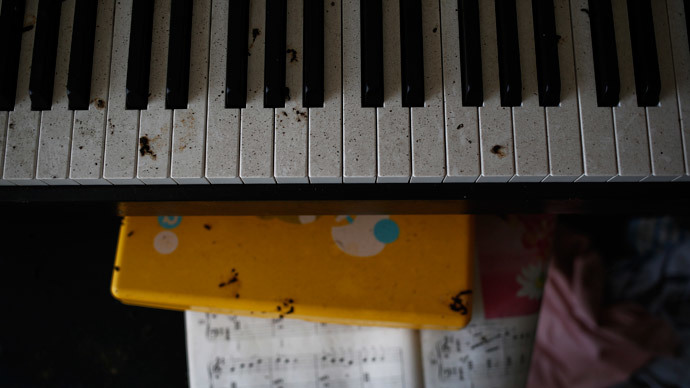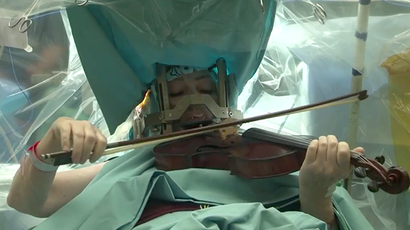VIDEO: Polyphonic German soprano does the impossible – sings 2 notes at once!

A German singer has wowed the Internet by sharing a video of her incredible alien-like talent – singing multiple notes at once, changing the fundamental note and overtones and moving them in opposite directions.
Anna-Maria Hefele has been practicing the art of overtone singing for over 10 years now, aside from being a classical soprano and playing the harp, piano, mandolin, didgeridoo and a Schwegel.
The skills she displays on the video far outweigh what the thousands of viewers, including musicians, thought possible for a human being. At the 25-second mark she starts off with the basics, but then the real show begins: she starts shifting the fundamental note, while independently controlling the frequency of the overtone.
In case this sounds confusing: every note has a fundamental frequency. For instance, an E in the third octave sits somewhere at the 40-42Hz mark. But every note also has higher, subtle frequencies at which it resonates – those are called harmonics. They are multiples of the fundamental frequencies (an E in the fourth octave would be somewhere around 80Hz, then 160Hz and so on).
“You can sing the overtone scale on one fundamental. Another fundamental has its own overtone scale, so in order to have more overtones to sing nice melodies, you can use different fundamentals and change them while singing,” she explains in the video.
The part starting at 3 minutes 25 seconds is truly astounding. It is highly recommended to watch the video with headphones to truly appreciate what is happening.
Here is another example, where Hefele performs with a world music band, in which her gift truly shines.
While Hefele's skills are “other-worldly,” they are actually not impossible – just incredibly rare and difficult to train. The technique originates from Mongolia and is called throat singing, or ‘sygyt.’














